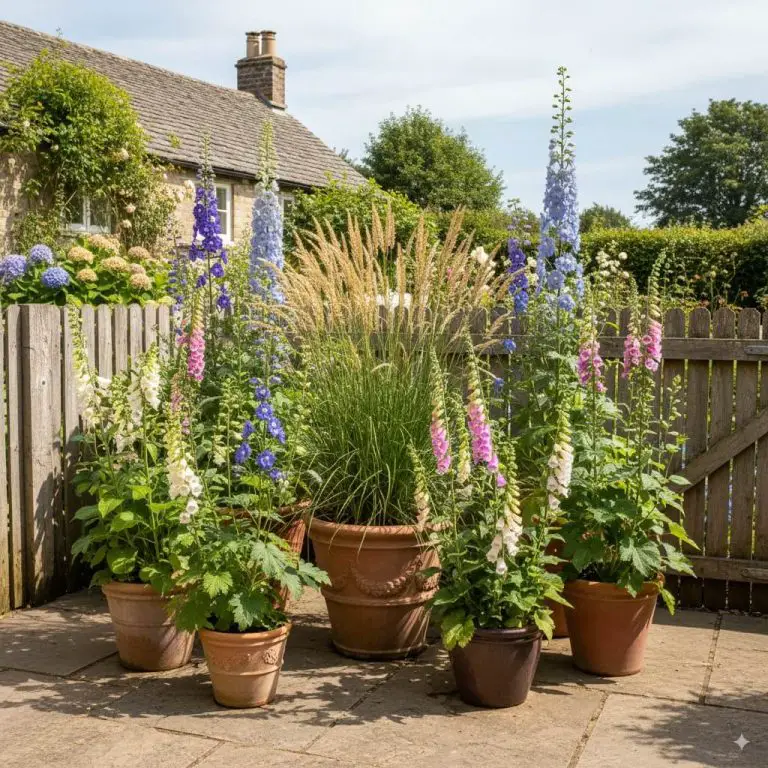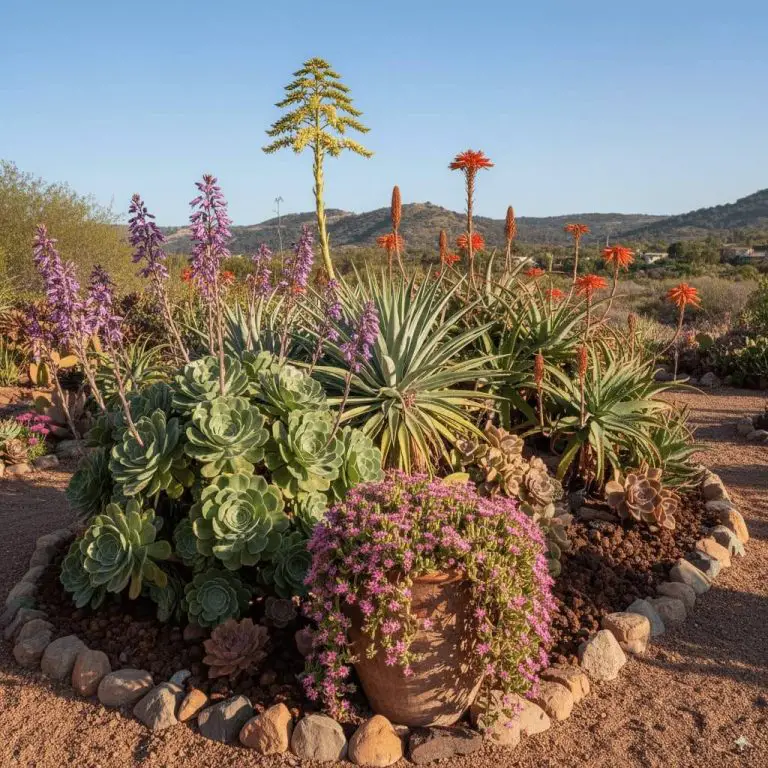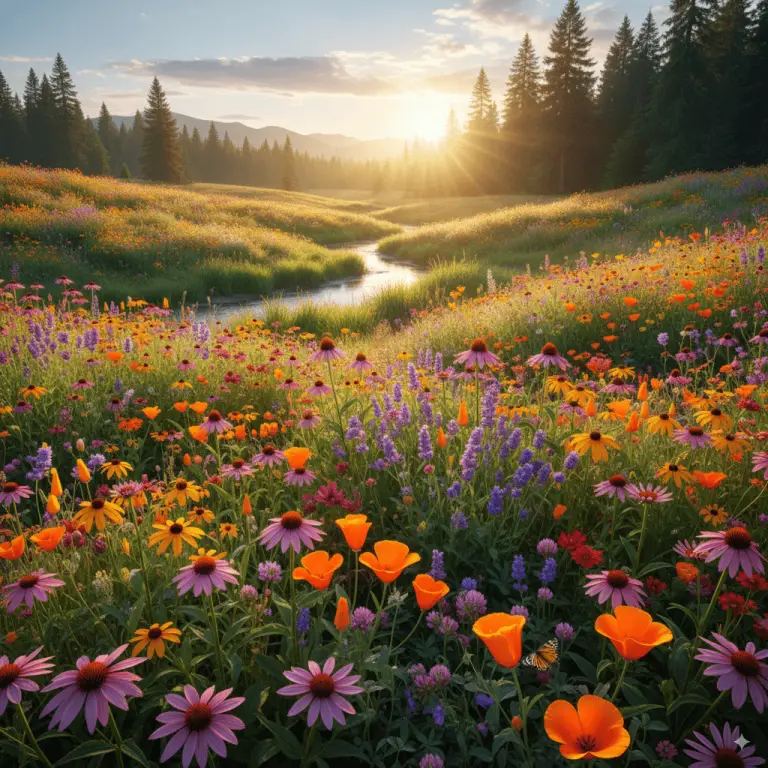Speciation Rates In Flowering Plants Are Your Ultimate Guide To Garden
Ever walk into a garden center and feel that wonderful, slightly overwhelming sense of awe? You went in for one simple marigold, but now you’re staring at a sea of options—fiery reds, sunny yellows, creamy whites, and even striped varieties you never knew existed. It’s a dazzling display of nature’s creativity.
I know that feeling well. It’s the same magic that gets every gardener’s heart racing. What if I told you there’s a fascinating scientific reason for this incredible variety, and that understanding it can make you a more creative, confident, and successful gardener?
I promise, we’re not about to get lost in a dense textbook. Instead, we’re going to unlock a simple secret together. The reason for this beautiful explosion of choice is that the speciation rates in flowering plants are remarkably high. Think of it as nature’s engine for innovation, running at full speed.
In this guide, we’ll explore what this means for your backyard, how to harness this botanical magic to design a garden that’s uniquely you, and even dip our toes into the fun world of creating your own flower varieties. Let’s dig in!
What Does “Speciation Rate” Even Mean for a Gardener?

🌿 The Companion Planting & Gardening Book (eBook)
Bigger harvests, fewer pests — natural pairings & simple layouts. $6.99
Get – $6.99
🪴 The Pest-Free Indoor Garden (eBook)
DIY sprays & soil tips for bug-free houseplants. $4.89
Get – $4.99Okay, let’s clear this up right away. “Speciation rate” sounds like something from a biology final exam, but the idea is actually quite simple and exciting for us gardeners. Don’t worry—this will be painless and fun!
In the simplest terms, speciation is just how new, distinct species of living things come into being. The “rate” is how fast it happens. For flowering plants, this process is on hyperdrive compared to many other life forms.
Imagine it like this: You have a classic, simple red rose. Over time, thanks to things like pollination, genetic quirks, and different growing environments, that one red rose gives rise to pink roses, white roses, climbing roses, and tiny miniature roses. That rapid branching out is a perfect example of high speciation and diversification at work.
From Science to Soil: Why It Matters to You
So, why should you care? Because this natural phenomenon is the reason you have an almost endless palette to paint your garden with. It’s the engine behind:
- The 20+ different types of mint for your herb garden.
- The hundreds of dahlia varieties, from tiny pom-poms to giant “dinner plate” blooms.
- The stunning array of tulips that let you have blooms from early to late spring.
One of the few common problems with speciation rates in flowering plants are the sheer number of choices can lead to “gardener’s paralysis”! But by understanding the source of this diversity, you can turn that overwhelming feeling into empowerment. This complete speciation rates in flowering plants are care guide will show you how.
Why High Speciation Rates in Flowering Plants Are a Gardener’s Best Friend
Now for the really good part! This incredible variety isn’t just for looks. It provides tangible benefits that can make your garden more resilient, beautiful, and productive. Let’s break down the amazing benefits of speciation rates in flowering plants are and what they mean for your garden beds.
Benefit 1: An Unending Creative Palette
The most obvious benefit is choice. High diversification gives us plants in every conceivable color, shape, size, and texture. You can design a garden that perfectly matches your personality, whether it’s a tranquil all-white moon garden or a riotously colorful cottage garden.
Benefit 2: Solutions for Every Garden Challenge
Have a tricky spot in your yard? Chances are, there’s a plant variety that evolved or was bred for those exact conditions. This natural diversity gives us:
- Drought-tolerant lavender and sedum for that hot, dry patch.
- Shade-loving hostas and astilbes for under that big oak tree.
- Clay-busting daylilies and black-eyed Susans that aren’t fussy about soil.
Benefit 3: A Longer, More Dynamic Blooming Season
You don’t have to settle for a garden that only looks good in June. By choosing different varieties of the same plant, you can create waves of color that last for months. Plant early, mid-season, and late-blooming daffodil varieties, and you’ll have cheerful yellow blooms for six weeks instead of two!
Benefit 4: Built-In Pest and Disease Resistance
Plant breeders are constantly working to create new cultivars that are more resistant to common ailments like powdery mildew or pests like aphids. This means you can spend less time spraying and more time enjoying your beautiful, healthy plants. The ‘Knock Out’ series of roses is a perfect example of breeding for hardiness and disease resistance.
A Practical Guide: How to Harness Plant Diversity in Your Garden
Alright, you understand the “what” and the “why.” Now for the “how.” This section is your practical speciation rates in flowering plants are guide to turning this knowledge into a stunning garden reality. Here are some of my favorite tips for leveraging plant diversity.
H3: Think in Layers and Variations
Instead of planting just one type of coneflower, try planting three! Choose a classic purple coneflower, a shorter white ‘PowWow White’, and a vibrant orange ‘Tangerine Dream’.
Planting them together creates a more natural, visually interesting display with varied heights and colors. This simple trick makes your garden beds look lush and professionally designed.
H3: Master Succession Planting with Cultivars
Succession planting keeps your garden interesting all season long. Here’s how to speciation rates in flowering plants are used to your advantage for continuous blooms:
- Asters: Plant an early-blooming variety like ‘Wood’s Blue’ and a late-blooming one like ‘October Skies’ to extend your fall color.
- Peonies: Combine an early ‘Fernleaf’ peony, a mid-season ‘Sarah Bernhardt’, and a late ‘Festiva Maxima’ for a full month of glorious peony blossoms.
- Daylilies: This is the ultimate plant for this technique! Mix early, mid, late, and re-blooming varieties like ‘Stella de Oro’ for color from spring until frost.
H3: Explore the World of Heirlooms vs. Hybrids
The vast world of flowering plants gives us two amazing categories to explore:
- Heirlooms: These are old-fashioned, open-pollinated varieties that have been passed down through generations. They are prized for their unique history, fragrance, and reliability. Think of ‘Brandywine’ tomatoes or ‘Grandma’s’ zinnias. Saving their seeds means you’ll get the same plant next year!
- Hybrids (F1): These are created by intentionally cross-pollinating two different parent plants to get the best traits of both, such as bigger blooms or specific disease resistance. They are often vigorous but their seeds may not grow true-to-type.
Pro-Tip: A great garden has a mix of both! Use hardy, reliable hybrids for your main structure and sprinkle in unique heirlooms for charm and fragrance.
Getting Hands-On: Your First Steps into Plant Breeding
Feeling adventurous? You can participate in the magic of plant diversification yourself! Creating a brand-new, stable species is incredibly complex, but creating a unique hybrid flower in your own backyard is a fun and rewarding experiment. Don’t worry—it’s easier than it sounds!
Zinnias, daylilies, and cosmos are fantastic plants for beginners. Here are the speciation rates in flowering plants are best practices for your first cross-pollination project.
- Choose Your “Parents”: Select two healthy, open flowers on two different plants you want to cross. Let’s say a red zinnia (the “pollen donor”) and a yellow zinnia (the “seed parent”).
- Gather the Pollen: On a dry, sunny morning, use a small, clean paintbrush or a cotton swab to gently collect the dusty yellow pollen from the center of the red zinnia.
- Make the Cross: Carefully dab the collected pollen onto the sticky center part (the stigma) of the yellow zinnia.
- Protect Your Work: To prevent bees from bringing other pollen, you can cover the pollinated flower with a small mesh bag for a few days. Don’t forget to label the flower stem with the “parents” you used (e.g., “Yellow x Red”)!
- Wait and Harvest: Let the pollinated flower fade and dry naturally on the plant. Once the seed head is brown and dry, harvest the seeds.
- Plant and Discover!: Store the seeds in a cool, dry place until next spring. Plant them and see what you get! You might get pink, orange, or striped zinnias—each seed is a unique genetic surprise.
The Eco-Friendly Gardener: Sustainable Choices and Plant Diversity
Harnessing plant diversity isn’t just about aesthetics; it’s a cornerstone of creating a healthy, living ecosystem in your yard. A focus on sustainable speciation rates in flowering plants are choices that can make a huge difference for local wildlife.
H3: Champion Native Plants
Native plants are the ultimate local heroes. They have co-evolved over thousands of years with your region’s soil, climate, and pollinators. Planting natives like Bee Balm (Monarda) or Milkweed (Asclepias) provides the perfect food for local bees, butterflies, and birds. They are the foundation of an eco-friendly speciation rates in flowering plants are approach.
H3: Preserve Genetic Diversity by Saving Seeds
When you save seeds from heirloom and open-pollinated plants, you become a curator of genetic history. This simple act helps preserve plant varieties that might otherwise be lost, ensuring a richer, more resilient plant world for future generations of gardeners.
H3: Build a Pollinator Buffet
A garden filled with a wide variety of flower shapes and sizes is a feast for pollinators. Different bees, butterflies, and hummingbirds are attracted to different types of flowers. By planting a diverse mix—from the trumpet-shaped blooms of penstemon to the flat-topped flowers of yarrow—you support a greater range of beneficial insects, which in turn helps your whole garden thrive.
Frequently Asked Questions About Speciation and Garden Variety
What’s the difference between a plant species and a cultivar?
Think of a “species” as a broad, naturally occurring group, like Echinacea purpurea (Purple Coneflower). A “cultivar” (short for ‘cultivated variety’) is a specific type within that species that was selected by humans for a desirable trait, like the ‘White Swan’ coneflower. Cultivar names are usually in single quotes.
Can I create a new flower species in my garden?
While you can easily create a new variety or hybrid through cross-pollination (as we discussed above!), creating a whole new, stable species is a process that takes nature thousands or millions of years. But your unique zinnia hybrid is still a fantastic achievement and your very own creation!
Are hybrid plants bad for the environment?
Not at all! Many modern hybrids are bred for disease resistance, which can reduce the need for chemical sprays. The key to an eco-friendly garden is balance. Mix reliable, beautiful hybrids with a strong foundation of native and heirloom plants to support local ecosystems while enjoying the best of modern horticulture.
Your Garden, Your Masterpiece
The fact that speciation rates in flowering plants are so incredibly high isn’t just a fun piece of trivia—it’s a gift to every person who has ever put a seed in the ground.
It’s the reason for the breathtaking beauty of a botanical garden, the excitement of a new seed catalog, and the personal satisfaction of seeing a unique flower bloom in your own yard.
So the next time you’re planning your garden, I encourage you to embrace this diversity. Don’t just plant one kind of salvia; plant three. Try that unusually colored heirloom tomato. Mix and match textures, heights, and bloom times.
You have an entire world of botanical art supplies at your fingertips. Go ahead, experiment, play, and create a garden that is as vibrant and unique as you are. Happy gardening!
- Do African Violets Like To Be Crowded? The Secret To More Blooms - October 16, 2025
- How Do African Violets Survive In The Wild – Secrets To Replicating - October 16, 2025
- African Violet Care And Maintenance – Unlocking The Secrets To - October 16, 2025



